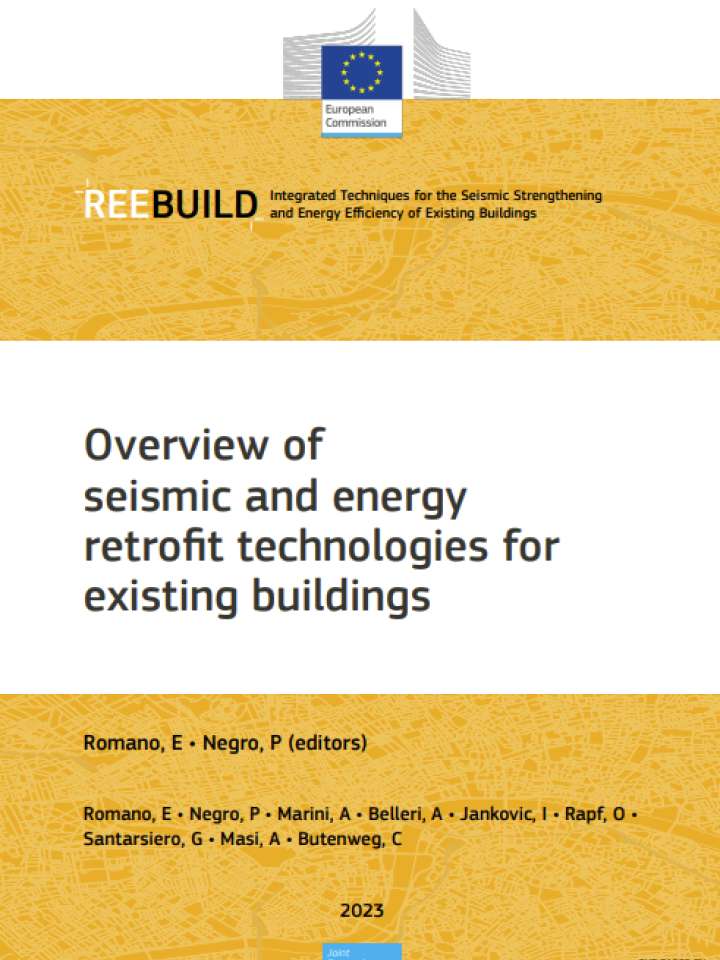Overview of seismic and energy retrofit technologies for existing buildings
This report provides a simplified analysis to identify the EU existing buildings most needing combined seismic and energy retrofit, along with a focus on the Italian context due to the huge variability of its building stock. This investigation is essential to facilitate the selection of suitable renovation strategies, useful for practitioners, policy makers, and local authorities. Technologies for seismic and energy retrofit are reviewed and classified to assess their applicability to the investigated building typologies mainly in terms of compatibility, cost, and disruption time to ease the decision making process of different stakeholders, such as investors, clients, policy makers, in the preliminary phase of a renovation design.
Key conclusions include:
- The majority of the EU existing building stock suffers from both structural deficiencies, mainly in seismic prone regions, and energy inefficiency. Hence, combined seismic and energy retrofit becomes an essential priority to achieve a safe, sustainable, and resilient built environment. However, the diversity of the EU buildings complicates a large-scale modernisation.
- Italy represents a particular case study for the investigation of the EU buildings needing combined seismic and energy retrofit due to the huge variability of the Italian building stock in terms of construction technologies, structural details, and envelope components.
- Energy retrofit technologies can be classified in active and passive interventions, depending on solutions concerning the energy system (i.e. heating, ventilation, and air conditioning systems) and the components of the building envelope, respectively.
- Seismic retrofit technologies rely on two main intervention approaches: (i) global and (ii) local interventions, operating at level of structural system as a whole and individual structural elements, respectively.
Explore further
